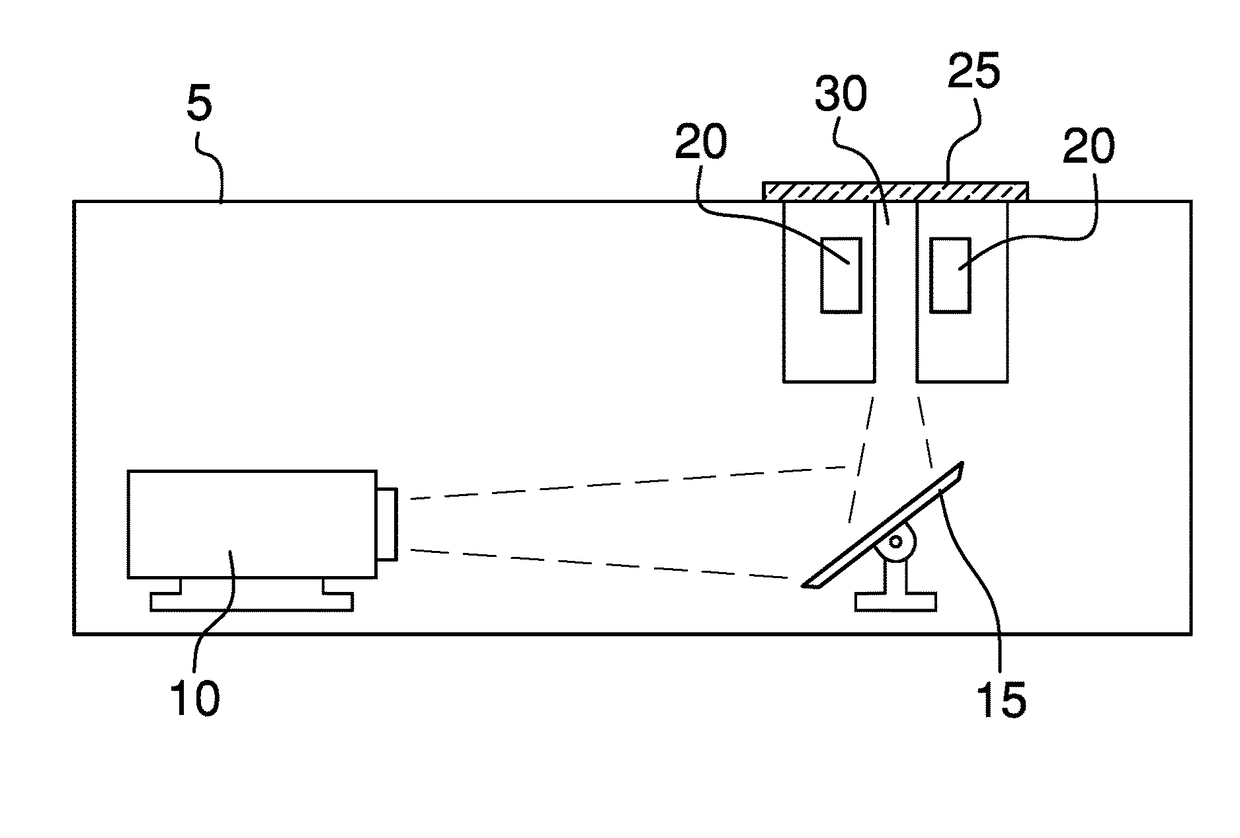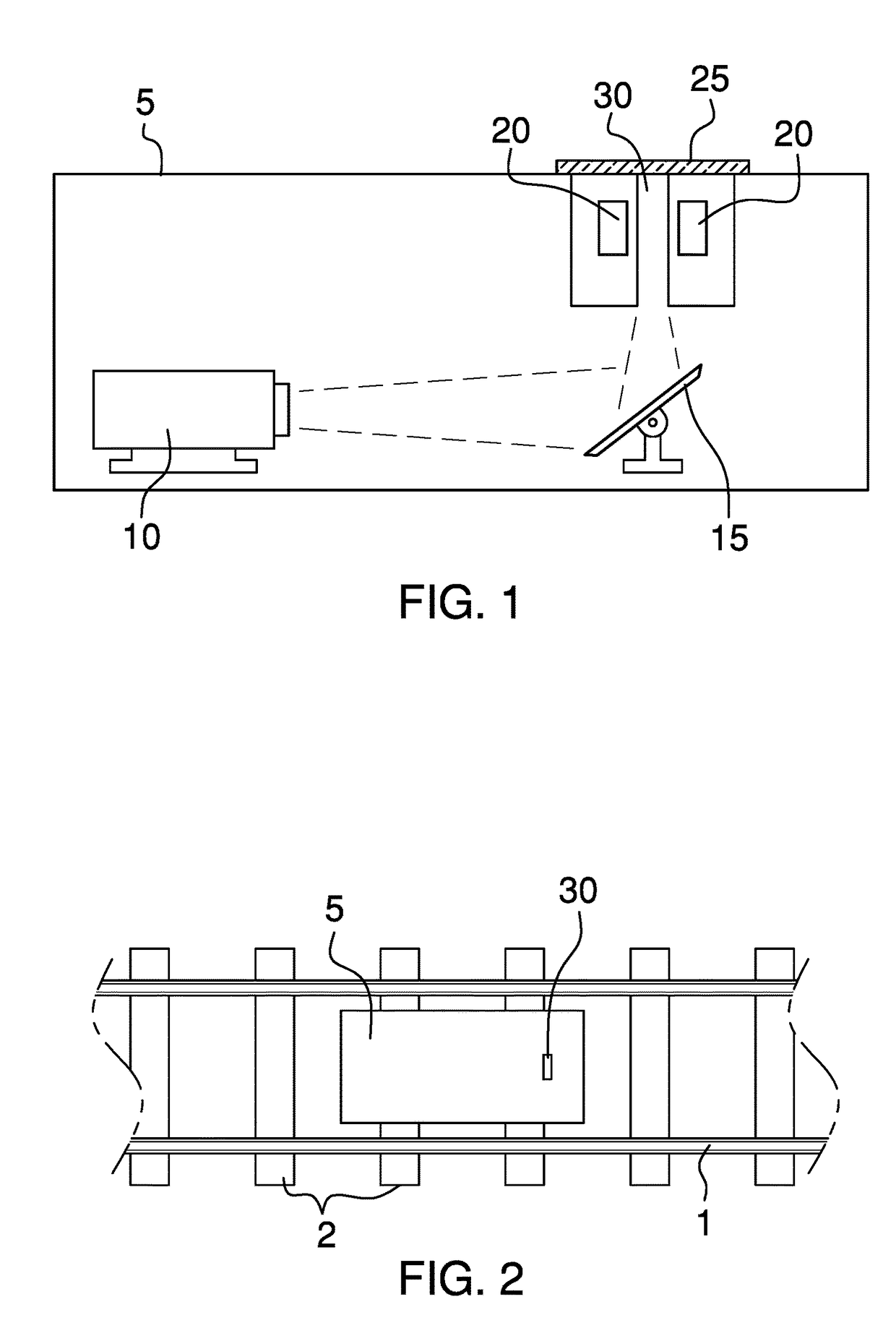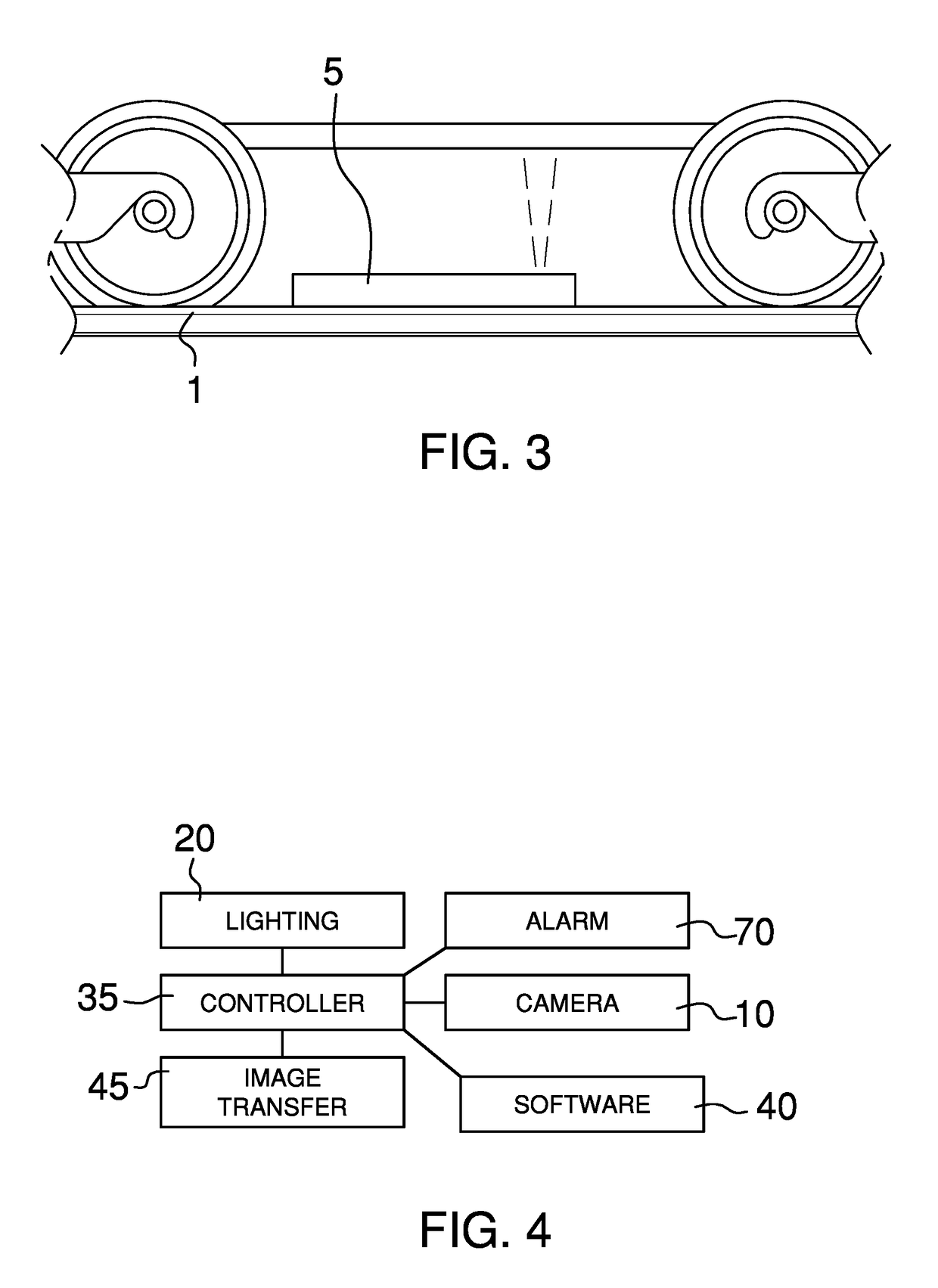Method and Apparatus to Capture Continuous High Resolution Images of Moving Train Car Undercarriage and its Structural Components
a technology for moving train cars and undercarriages, applied in vehicle components, color television details, television systems, etc., can solve problems such as train derailment, and achieve the effect of not affecting picture quality
- Summary
- Abstract
- Description
- Claims
- Application Information
AI Technical Summary
Benefits of technology
Problems solved by technology
Method used
Image
Examples
Embodiment Construction
[0041]The modern train moves along a set of parallel railroad tracks with a locomotive and a series of cars attached to the locomotive. Beneath the tracks are a plurality of the railroad ties that rest perpendicular to the railroad tracks and support the railroad tracks. This system of train travel has existed from the beginning of train travel. Because trains are typically loud and tend to travel throughout the night, trains often move in very remote locations.
[0042]Because trains are large cumbersome structures it is important to be able to periodically inspect the connections between cars as well as the general condition of the undercarriage of the train. The train cars are typically assembled using a set of knuckles and hasps that connect the cars. With this type of system the cars can be disconnected if desired. It is imperative that the integrity of the connections means (knuckles and hasps) and the train's undercarriage be inspected periodically. The failure of the connection...
PUM
 Login to View More
Login to View More Abstract
Description
Claims
Application Information
 Login to View More
Login to View More - R&D
- Intellectual Property
- Life Sciences
- Materials
- Tech Scout
- Unparalleled Data Quality
- Higher Quality Content
- 60% Fewer Hallucinations
Browse by: Latest US Patents, China's latest patents, Technical Efficacy Thesaurus, Application Domain, Technology Topic, Popular Technical Reports.
© 2025 PatSnap. All rights reserved.Legal|Privacy policy|Modern Slavery Act Transparency Statement|Sitemap|About US| Contact US: help@patsnap.com



